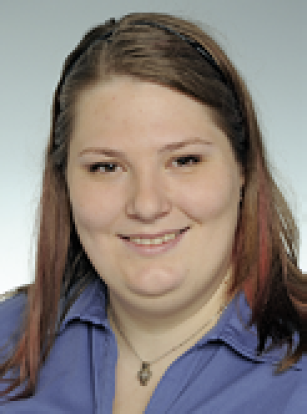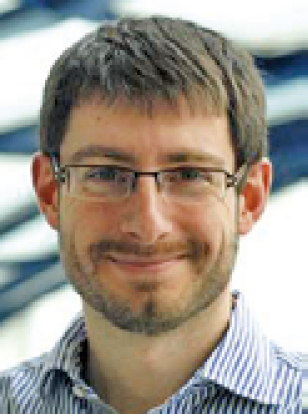The Quality of Prepared Specimens of Si-Wafers for Raman Spectroscopy
-
F. Kolb
Franziska Kolb was a former member of the Chair for Ferrous Metallurgy at the Montan University of Leoben. Her task was to prepare iron ores and reduced materials in co-operation with the chair of Geology and Economic Geology. In 2013 she joined the Materials Center Leoben Forschung GmbH in the field of Micro-electronics.Marco Deluca obtained his PhD in Materials Science from the Kyoto Institute of Technology (Japan) in 2009. He then joined the Materials Center Leoben Forschung GmbH, where he is presently in charge of Raman Spectroscopy, mainly for the study of structural-property relationships in electro-ceramic and semi-conductor materials.
Abstract
In order to be able to carry out reliable measurements using a Raman Spectrometer it is important to know what stresses and localised changes have been induced in the specimen by the preparation process. To investigate this, a trial was set up to investigate the changes which occur in the structure of the material as a result of the specimen preparation process, thus leading to an optimum method of preparation for Raman Spectroscopy.
Kurzfassung
Um gute Messungen am Raman-Spektrometer durchführen zu können, ist es wichtig zu wissen, welche Spannungen bzw. lokale Änderungen in der Probe erst durch die Präparation entstanden sind. Hierfür wurde ein Versuchsaufbau erstellt, der über die entstandenen Veränderungen der Materialstruktur Aufschluss gibt und somit eine optimale Schliffpräparation für die Raman-Spektroskopie ermöglicht.
About the authors

Franziska Kolb was a former member of the Chair for Ferrous Metallurgy at the Montan University of Leoben. Her task was to prepare iron ores and reduced materials in co-operation with the chair of Geology and Economic Geology. In 2013 she joined the Materials Center Leoben Forschung GmbH in the field of Micro-electronics.

Marco Deluca obtained his PhD in Materials Science from the Kyoto Institute of Technology (Japan) in 2009. He then joined the Materials Center Leoben Forschung GmbH, where he is presently in charge of Raman Spectroscopy, mainly for the study of structural-property relationships in electro-ceramic and semi-conductor materials.
Acknowledgement
The financial support from the Austrian Federal Government (and in particular from the Bundesministerium für Verkehr, Innovation und Technologie and the Bundesministerium für Wissenschaft, Forschung und Wirtschaft) represented by the Österreichische Forschungsförderungsgesellschaft mbH and the Styrian and Tyrolean Provincial Government, represented by the Steirische Wirtschaftsförderungsgesellschaft mbH and the Standortagentur Tirol, within the framework of the COMET Funding Programme, is gratefully acknowledged.
Danksagung
Der österreichischen Bundesregierung (insbesondere dem Bundesministerium für Verkehr, Innovation und Technologie und dem Bundesministerium für Wissenschaft, Forschung und Wirtschaft) vertreten durch die Österreichische Forschungsförderungsgesellschaft mbH (FFG), und den Ländern Steiermark und Tirol, vertreten durch die Steirische Wirtschaftsförderungsgesellschaft mbH (SFG) sowie die Standortagentur Tirol, wird für die Förderung im Rahmen des COMET Förderprogramms herzlich gedankt.
References / Literatur
[1] De Wolf, I.; Maes, H. E.; Jones, S. K.: Stress measurements in silicon devices through Raman spectroscopy: Bridging the gap between theory and experiment, Journal of Applied Physics 79, 7148 (1996) DOI: 10.1063/1.36148510.1063/1.361485Search in Google Scholar
[2] Wimmer, A. C.: Die chemischen Elemente, Wimmer, Weinburg, 2012Search in Google Scholar
[3] Latscha, H. P.; Klein, H. A.: Anorganische Chemie, Chemie-Basiswissen I, 9. Auflage, Springer-Verlag, Berlin, 2007, DOI: 10.1007/978-3-540-69865-410.1007/978-3-540-69865-4Search in Google Scholar
[4] Koch, C.; Rinke, T. J.: Silizium Wafer, Herstellung, Spezifikationen, Ätzen von Si und SiO2, MicroChemicals, Ulm, 2012Search in Google Scholar
[5] Böcker, J.: Spektroskopie, Vogel Verlag und Druck GmbH & Co.KG, Würzburg, 1997, 195 ffSearch in Google Scholar
[6] Anastassakis, E.; Pinczuk, A.; Burstein, E.: Effect of static uniaxial stress on the Raman spectrum of silicon, Solid State Communications, Volume 8, Issue 2, 15 January 1970, 133 – 138 DOI: 10.1016/0038-1098(70)90588-010.1016/0038-1098(70)90588-0Search in Google Scholar
[7] Gogotsi, Y.; Baek, C.; Kirscht, F.: Raman microspectroscopy study of processing-induced phase transformations and residual stress in silicon, Semiconductor Science and Technology, Volume 14, Number 10 DOI: 10.1088/0268-1242/14/10/31010.1088/0268-1242/14/10/310Search in Google Scholar
© 2015 Walter de Gruyter GmbH, Berlin/Boston, Germany
Articles in the same Issue
- Contents
- Editorial
- Editorial
- The Quality of Prepared Specimens of Si-Wafers for Raman Spectroscopy
- Investigation of the Self Tempering Effect of Martensite by Means of Atom Probe Tomography
- Preparation of Carbide-Free Bainitic Steels for EBSD Investigations
- LCF Coupling Failure in a Two-Feet Light Railway
- Top-ten downloads / Picture of the month
- Top-Ten Article Downloads
- Picture of the Month
- PM-News
- PM-News
- Meeting diary
- Meeting diary
Articles in the same Issue
- Contents
- Editorial
- Editorial
- The Quality of Prepared Specimens of Si-Wafers for Raman Spectroscopy
- Investigation of the Self Tempering Effect of Martensite by Means of Atom Probe Tomography
- Preparation of Carbide-Free Bainitic Steels for EBSD Investigations
- LCF Coupling Failure in a Two-Feet Light Railway
- Top-ten downloads / Picture of the month
- Top-Ten Article Downloads
- Picture of the Month
- PM-News
- PM-News
- Meeting diary
- Meeting diary

